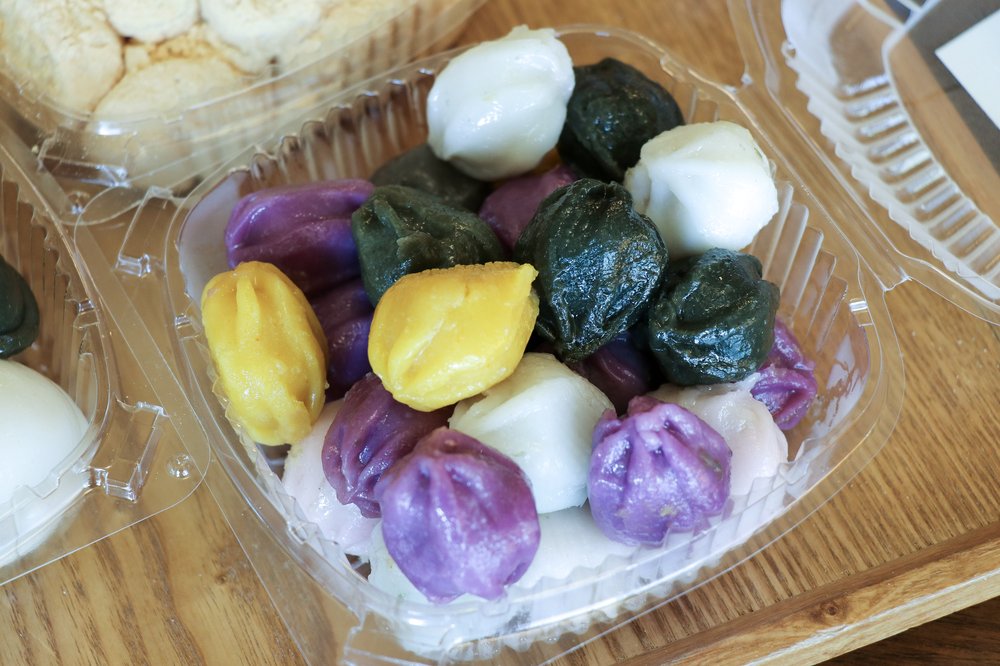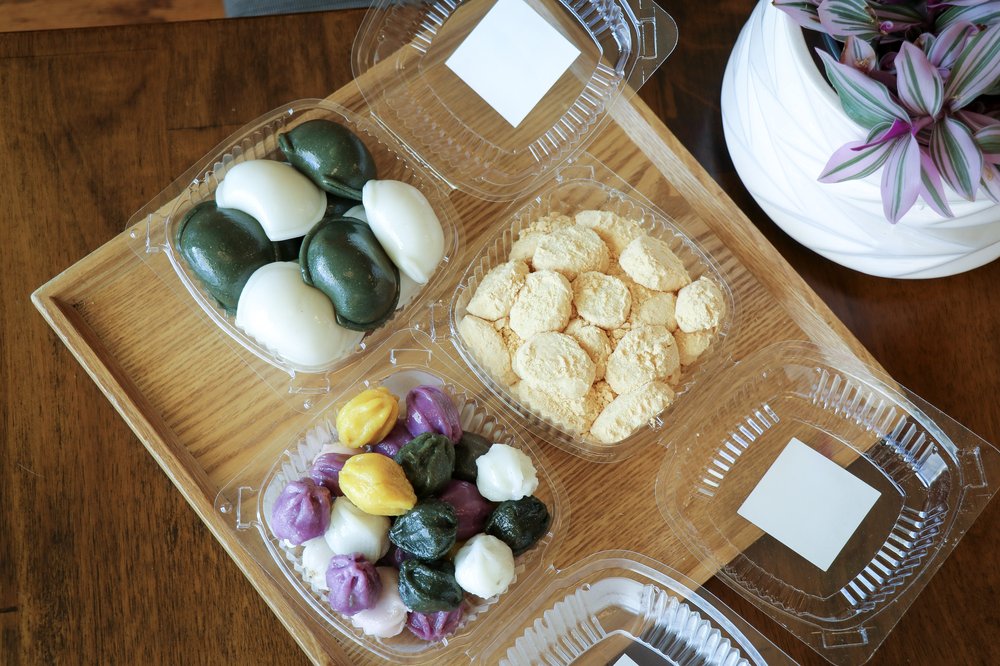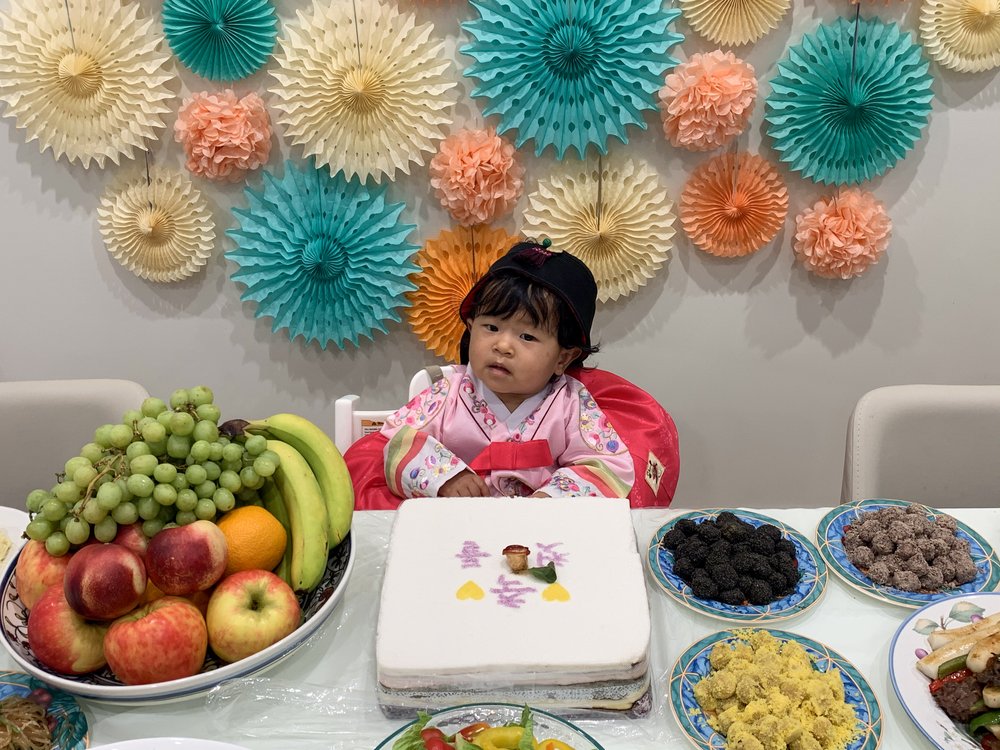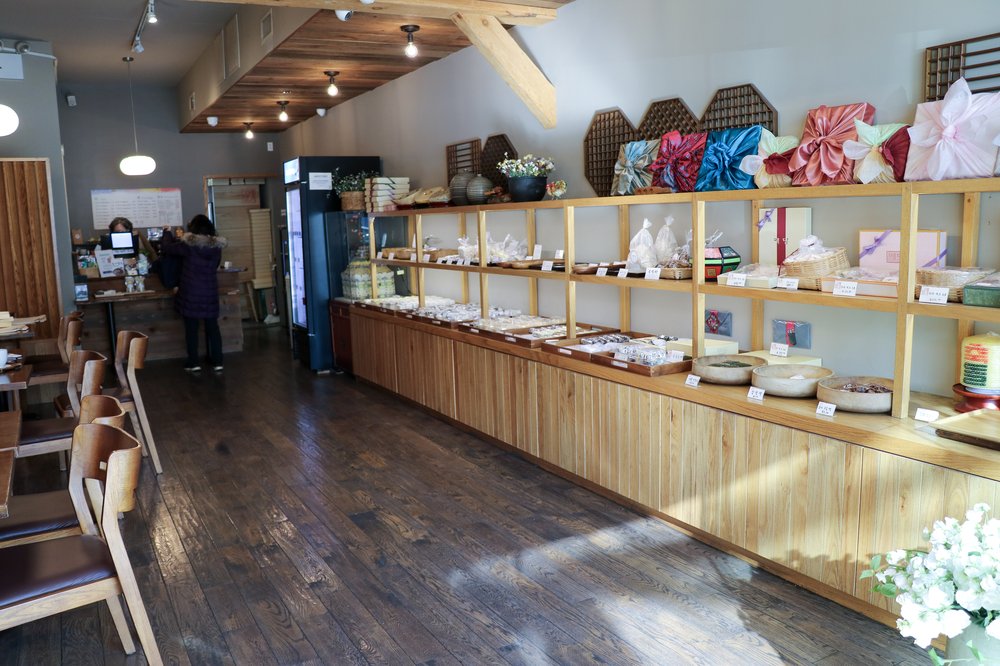The Queens cafe that’s a go-to spot for Korean cultural celebrations
Jan. 28, 2025, 5 a.m.
With more than 30 kinds of tteok, Yedang Cafe in Bayside has been serving up artisanal Korean specialties for decades.

To prep for this Lunar New Year, which arrives on Wednesday, Jan. 29, Korean Americans have been flocking to Yedang, the rare New York City business specializing in traditional, artisanal tteok (chewy rice cakes that come in both sweet and savory varieties). The cafe in Bayside, Queens, is a fixture among the local Korean community in eastern Queens.
I grew up in this community, my parents still live in it and I am still a part of it. Yedang has been our go-to spot for nearly all family celebrations, big and small, and every day tteok cravings.

And 22 years after starting it, owner Hee Soon Kim, 81, is still the one who makes Yedang's signature rice cakes. Tteok is not only a quick snack but also a staple of celebrations — holidays, weddings, birthdays, ancestral ceremonies — since 500 B.C.E. And in New York and New Jersey, Yedang is a beloved source of it.
In 1987, Kim came to the U.S. because her husband’s employer, a global clothing store, relocated him to Ridgefield, N.J. Between taking care of their children and visiting the Korean Buddhist Wonkaksa temple in Salisbury Mills, N.Y., she frequented the numerous Korean restaurants in Bergen County for a taste of home.
“But the tteok was so bad,” she said. “You can get good quality, home-style bulgogi, galbi (Korean barbecue cuts), japchae (stir-fried noodles), but not tteok," she said, in Korean. "People who didn’t really know how to make it were making it here.”

Tteok is difficult to make for a variety of reasons: it’s labor intensive, it requires many steps and days to go from flour to cake, and it needs just the right amount of moisture and uniformity of texture. It can easily become too grainy, gooey, hard or crumbly without that precision. So in 2001, she picked up and left for Seoul to learn how to make tteok the traditional way. She apprenticed in shops that focused on different kinds of tteok (there are dozens).
Equipped with the skills that have been disappearing amid mass production practices in both the U.S. and Korea, she returned to New Jersey. In 2003, she set up shop inside the Hmart in Ridgefield.
In the beginning, it was really tough,” said Lee. “There were a lot of ingredients you couldn’t find in the U.S. Sure, there were red beans, mung beans, and mugwort here, but they just weren’t good enough.” Instead she opted to go through the hurdles of importing them from Korea.
Her tteok soon hit an unmet demand. That Chuseok (Fall Harvest Festival), her tteok sold out so fast that she closed up shop and hid in the back, afraid to confront upset customers. In 2006, she opened a now-closed shop two miles away in Murray Hill; and years later, two stand-alone cafes in Bayside, Queens and Closter, N.J.

To this day, she makes the tteok out of her Ridgefield, N.J. kitchen every day, now with the help of kitchen staff. Producing tteok is a laborious process that takes two days. She starts with fresh, high-quality rice grains, mainly white short-grain and glutinous. The grains are steamed, blended, air-dried, ground into fine flour, pounded into dough and steamed into the final product.
She makes about 30 kinds of tteok, so add in extra steps of handling ingredients like mugwort (which she ships directly from Jeolla Province, Korea, for its inimitable aroma), jujubes, mung beans, toasted soybean powder, red beans, white and black sesame seeds, walnuts, pumpkin, blueberry, and honey. Her tteok is only dyed with whole ingredients.

Lee’s craftsmanship is what draws local Korean Americans for celebratory occasions: long, white ropes of tteok, or slices of it, for Seollal (Lunar New Year) to simmer in a rich, beef soup called tteokguk; a fluffy, white steamed cake for a newborn’s 100th day; multi-layered mujigae (rainbow) cake for dol (baby’s first birthday) or paebaek (wedding ceremony); songpyeon (prisms stuffed with honey and sesame) for Chuseok. Yedang is also the rare place to grab old-school Korean treats like sesame seed cookies, bingsu (shaved ice with all the traditional accoutrements), and seasonal hot red bean porridge.
Almost all of it can be gifted in boxes wrapped with bojagi (vibrant cloths), a centuries-old custom of offering tteok as a gift from back when rice was scarce.

Yedang offers 30 varieties of tteok in addition to Korean treats like sesame seed cookies and seasonal hot red bean porridge.
It's a successful business, all the more remarkable because she didn't even start it until she was 59.
“Why not just take it easy?” I asked.
Lee said she was simply determined to bring good, traditional tteok to the local Korean American community.
“If you really want to achieve something, is there anything without challenges? Everything has challenges.”
Jeong Un Park, manager of the Bayside cafe who has known her for 20 years, added to this: “She doesn’t have a passive personality. She has a can-do attitude. Even at 81, she’s still healthy, energetic, and keeps on working.”
13 ideas to celebrate Lunar New Year in New York City That ice skating rink in Bryant Park? It makes millions.